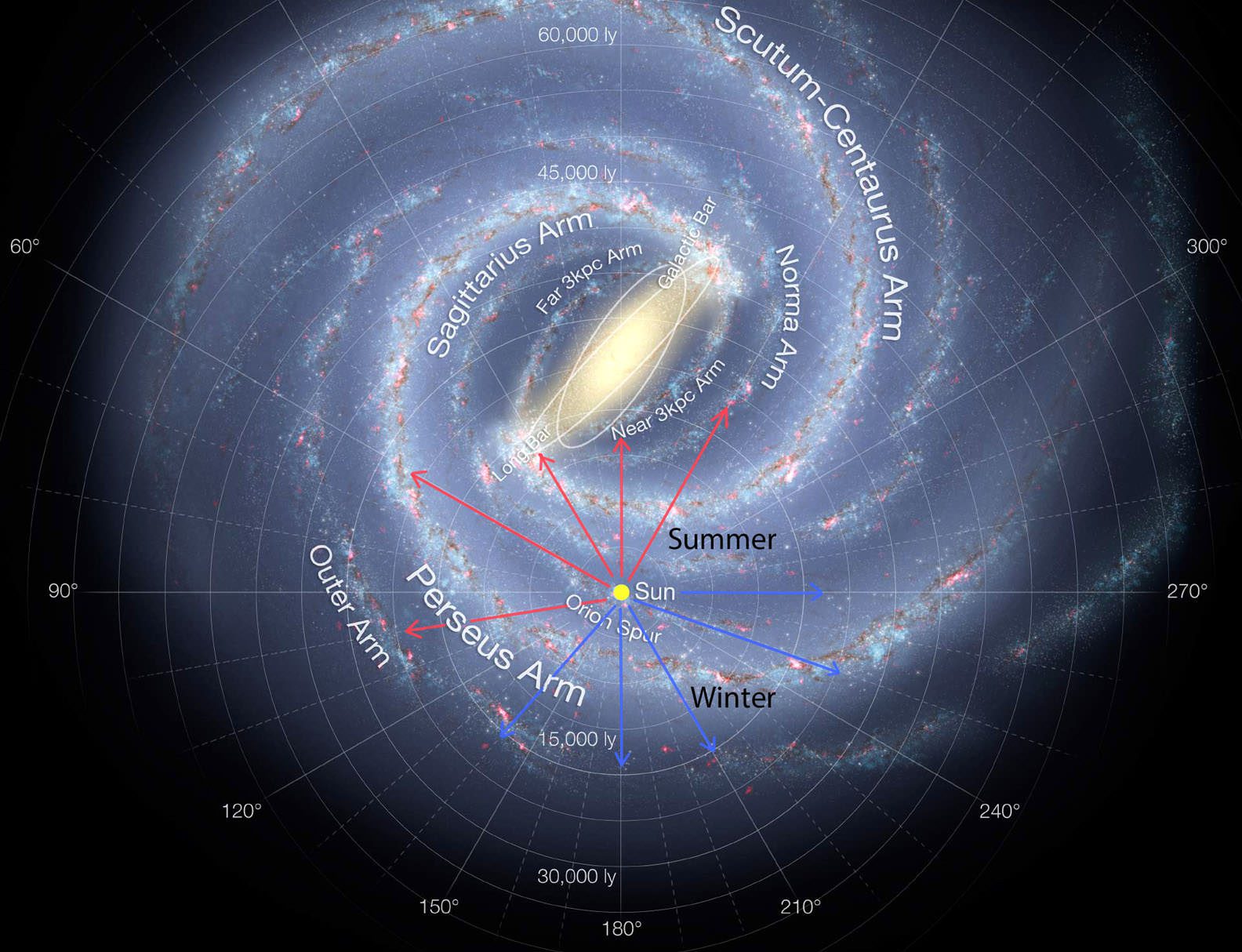From its spiral structure and massive black hole at its center to its estimated age and predicted collision with the Andromeda Galaxy, the Milky Way is full of astonishing facts that continue to capture our imagination. As we continue to explore and discover more about the galaxy, we gain a deeper understanding of the mysteries of the universe and our place within it.
10 Astonishing Facts About the Milky Way Galaxy
1. The Milky Way is a Spiral Galaxy
The Milky Way is a spiral galaxy and measures approximately 100,000 light-years in diameter. It has a central bulge surrounded by four major arms and several minor arms. It is estimated to contain between 100 and 400 billion stars.
2. The Milky Way is Home to a Massive Black Hole
At the center of the Milky Way, there is a supermassive black hole called Sagittarius A* (pronounced Sagittarius A-star). It is estimated to have a mass of over 4 million times that of the sun.
3. The Milky Way is Not Alone
The Milky Way is part of a group of galaxies known as the Local Group. It includes around 54 other galaxies, including the Andromeda Galaxy, which is the closest galaxy to us.
4. The Milky Way is Moving
The Milky Way is not stationary but is moving through space. It is estimated to be moving towards the Virgo Cluster of galaxies at a speed of around 600 km/s.
5. The Milky Way is Home to Many Planets
There are at least 100 billion planets in the Milky Way, and the number is rising as new exoplanets are discovered. One of the most famous planets in the Milky Way is our own, Earth.
6. The Milky Way is Home to Different Types of Stars
The Milky Way is home to different types of stars, including red dwarfs, yellow dwarfs (like our sun), and blue giants. The Milky Way also includes many variable stars, including Cepheid variables.
7. The Milky Way’s Age is Estimated to be Over 13 Billion Years Old
The age of the Milky Way is estimated to be over 13 billion years old, close to the age of the universe itself. This is based on the age of the oldest known star clusters in the galaxy.
8. The Milky Way’s Shape Can be Seen in the Night Sky
Depending on where you are in the world, it is possible to see the shape of the Milky Way in the night sky. It appears as a cloudy, hazy band of light stretching across the sky.
9. The Milky Way is Home to the Oort Cloud
The Oort Cloud is a hypothetical cloud of icy objects that surround the sun at a distance of around 50,000 astronomical units (AU). The Oort Cloud is believed to be the source of long-period comets that periodically enter the inner solar system.
10. The Milky Way is Predicted to Collide with Another Galaxy
The Milky Way is predicted to collide with the Andromeda Galaxy in around 4.5 billion years. The result of the collision is uncertain, but it is likely that stars will be flung out into space, and new star formation will occur due to the interaction of gas and dust clouds.
Conclusion
The Milky Way galaxy is an amazing and awe-inspiring sight that has fascinated astronomers and stargazers for centuries. With its vast expanse of stars, planets, and other celestial objects, it continues to reveal new facts and mysteries about the universe we live in. Understanding the Milky Way is crucial to our understanding of the cosmos and our place within it.
